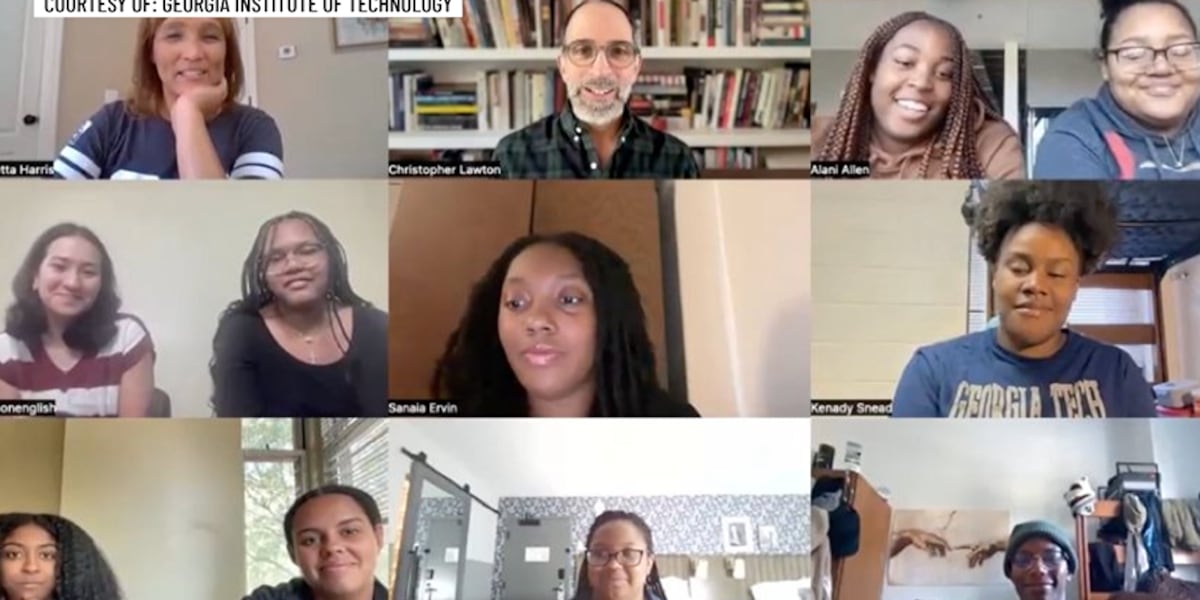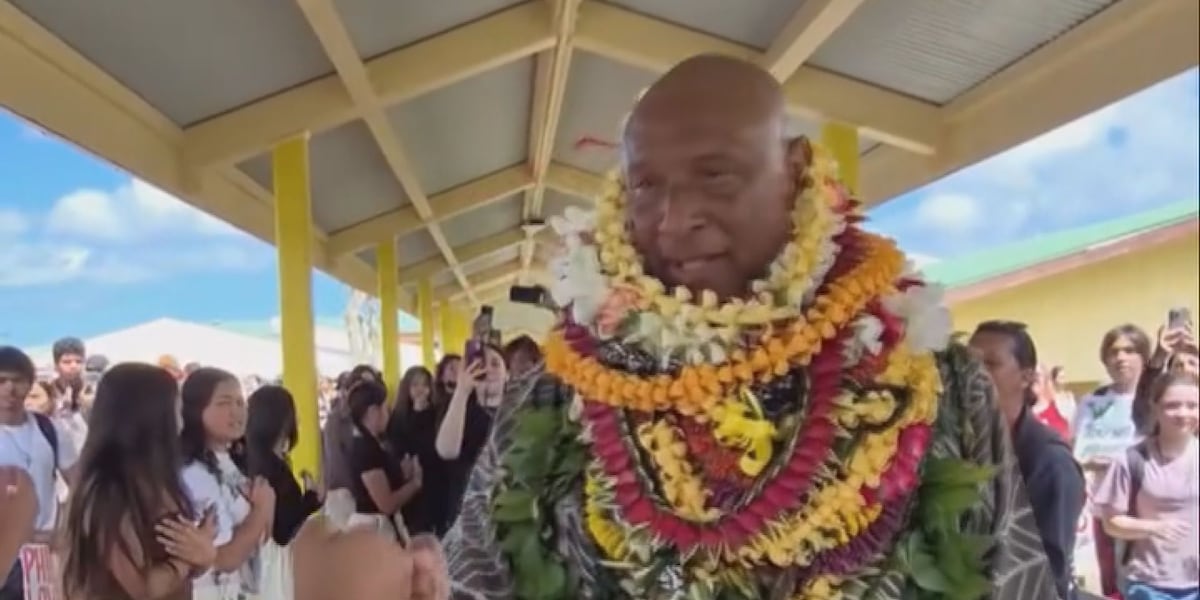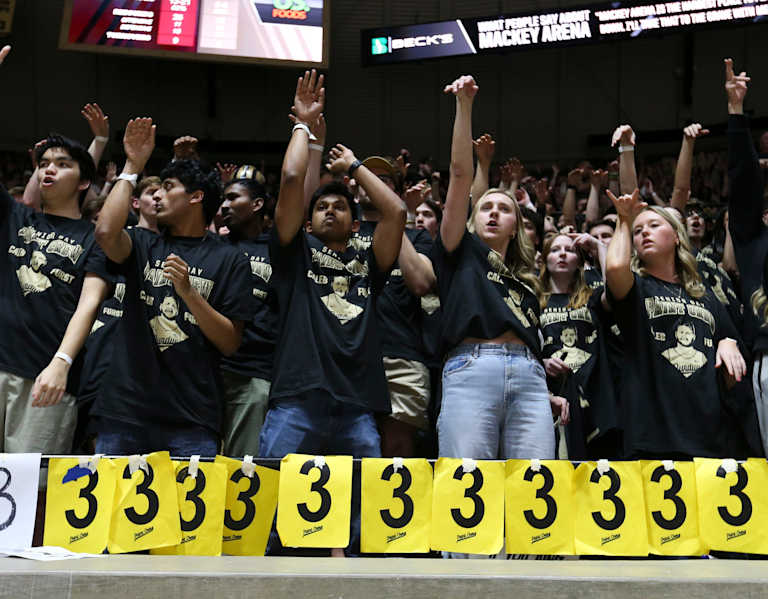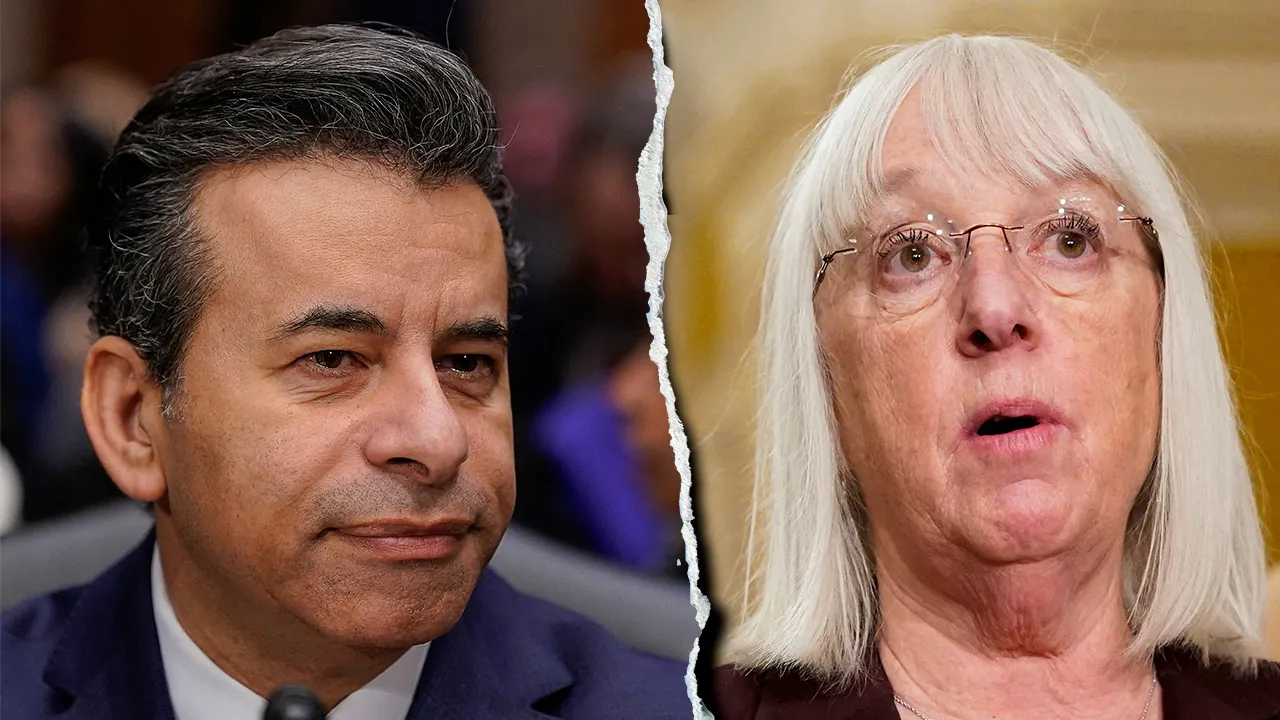Florida
Is it too late for Florida State to turn its season around?

TALLAHASSEE, Fla. — Florida State coach Mike Norvell has dealt with 0-2 starts. Bad home losses. Negativity. Quarterbacks getting booed.
Never, however, as a defending conference champion.
And never as a top-10 team.
Coming off a season when Florida State was left out of the College Football Playoff as an undefeated conference champion, Norvell had plenty on his plate: rebuilding a roster, developing leadership and getting his team past a snub that continued to sting months later.
He felt good about his plan, telling ESPN in July, “This has been arguably the best offseason I’ve ever been a part of. The way that they approached our winter drills, spring practice, summer, the work has been there. It’s a fast, explosive, powerful football team.”
But Florida State’s first two games exposed flaws not only in what should have been team strengths, but also a general lack of cohesion and leadership that has led to mistrust on the field. What’s more, all of this played out with a national television audience watching, and its lawsuit against the ACC challenging the grant of rights as a backdrop.
The Seminoles have not looked fast, explosive or powerful. Rather, they allowed Georgia Tech and Boston College to be the aggressors, dictating exactly how the first two games of the season would go. Meanwhile, offensive coordinator/offensive line coach Alex Atkins will miss his third game Saturday as he serves an NCAA-mandated three-game suspension for recruiting violations.
Norvell has vowed to be better as his team attempts to hit the reset button on its season against Memphis.
The question, of course, is this: Is it too late?
AS THE GAME clock wound down against Boston College, the Florida State sideline was as quiet as the rest of the stadium. Athletic director Michael Alford stood with his arms crossed, looking up at the scoreboard, disbelief settling in over a 28-13 loss that would drop the Seminoles from preseason No. 10 to outside the AP Top 25.
Another Florida State official used the word “bewilderment” to describe the scene. Norvell glared straight ahead as he ran off the field. Nobody — from Alford to Norvell to the coaching staff and players — expected to start 0-2.
Florida State was supposed to be past all this after Norvell elevated the program from irrelevance to an ACC title in four years. Perhaps the lowest point came in 2021 when the team got off to an 0-4 start and quarterback Jordan Travis was booed so badly he considered quitting football. From that point to the 2023 ACC championship game, Florida State went 28-6.
If the Seminoles engendered any sympathy after getting left out of the playoffs, it quickly dissipated after the school opted to sue the ACC to get out of the league. The team’s 0-2 start has drawn widespread ridicule on social media and whispers in ACC circles about karma being delivered to the two schools that have filed lawsuits (Clemson having lost 34-3 to Georgia in Week 1).
The lawsuits, however, have nothing to do with the on-field performance. The snub did send the program reeling, at least in the short term. For four years, Norvell had told his players if they put in the work, the reward would follow. Except in the case of the playoff, it had not, leading to anger and a crisis in confidence.
Nearly a quarter of the roster either opted out of last season’s Orange Bowl or entered the transfer portal; Florida State lost that game to Georgia 63-3. Ten players off its 2023 roster were drafted, including Travis, receiver Keon Coleman, defensive end Jared Verse and defensive tackle Braden Fiske.
Players throughout the offseason, and at ACC Kickoff, lamented the snub and vowed not to fall short of the playoff again. Asked whether the playoff snub has lingered this year, receiver Kentron Poitier delivered an emphatic no.
“It ain’t about last year, it’s about this year,” Poitier said. “Yeah, we talk a little bit about [the snub], but this is a whole new team.”
Norvell, meanwhile, had conversations with Alabama in January about replacing Nick Saban. But he stayed at Florida State and earned a contract extension that will pay him $10 million a year until 2031. At the time, he said, “There’s a lot of excitement around our program. I’m just excited to continue to build upon the foundation that’s been laid.”
Florida State dipped into the transfer portal again to rebuild. Since his arrival, Norvell has been strategic about the type of players he has brought into the program. Early on, he brought in players with multiple years of eligibility to help lay a foundation, including Verse, Trey Benson and Jammie Robinson. Florida State rose back to an elite level thanks in large part to the portal evaluations the program made — from Verse, Fiske and Coleman, to Johnny Wilson, Benson, Jermaine Johnson, Keir Thomas and Robinson.
This year, though, Norvell wanted to add complementary players to a roster that returned 82 players — many that Norvell recruited. In his mind, the foundation had been set, and the Seminoles wanted to rely on their role players taking on bigger starting roles, while using portal players to complement what they already had.
The Seminoles signed 17 transfers this time around, bringing in a top-10 portal class. The Seminoles knew they had to bring in a veteran quarterback with Travis gone and Brock Glenn still in need of development. They targeted the two biggest names: Cam Ward and DJ Uiagalelei. The quarterbacks visited on the same weekend in December.
Ward had also visited Miami and told ESPN in a previous interview that he made it clear to both coaching staffs that he planned to declare for the NFL draft but would keep his options open to return to college. “A lot of schools wanted to rush my decision, but I was going to do it on my time no matter what,” Ward said. Ultimately, Uiagalelei committed to the Seminoles on Jan. 1; Ward declared for the draft the same day, but did not sign with an agent. He changed his mind and decided to play at Miami, committing Jan. 13.
Uiagalelei had previously played in the ACC, starting his career at Clemson before going to Oregon State for 2023. From the beginning, there were questions about whether he would be able to play at an elite level at his third school. One opposing coach observed, “I just never felt like that guy was a championship quarterback. He’s just never been able to be accurate.”
Two games in, Uiagalelei has been erratic at best, and he was booed against Boston College where the crowd also chanted for the backup, Glenn. In two games, Uiagalelei has thrown for 465 yards with a touchdown and an interception, and is averaging just 6.7 yards per completion.
The other portal additions have been quiet, too. Defensive end Marvin Jones Jr., whom the staff raved about all spring and summer, has been neutralized as a threat (two total tackles). Alabama transfer receiver Malik Benson ranks third on the team in receiving yards. Roydell Williams leads the team in rushing, but is only averaging 3.2 yards per carry.
Asked after the Boston College game whether he had missed on his portal evaluations, Norvell responded tersely, “Obviously I’ve not done a good job putting our guys in a position to showcase what I believe that they are. So I’ll be better.”
But the issues go beyond the portal players. Between 2020-23, Florida State signed 25 ESPN 300 players; 13 remain on the team. Three are starters. Players Florida State wants to rely on — including DJ Lundy and defensive end Pat Payton — had to be convinced to return to the Seminoles in the first place. In December, Payton threatened to enter the portal before changing his mind; Lundy entered the portal and committed to Colorado, before opting to stay with the Seminoles.
What also has been glaring is the lack of leadership. Perhaps the staff thought replacing 10 NFL draft picks would not be as difficult as it has been, both from a production and leadership standpoint. “Travis, Verse and Fiske were all next-level guys who had been through the battles, and they don’t have it this year,” another opposing coach said.
Florida State worked the entire offseason on this needed intangible. Norvell held a retreat for the veterans that made up his leadership council in January, six months earlier than usual, understanding he had a new group that had big shoes to fill. Players in March discussed the need to get to know each other better, identifying three key words to building a successful team: relationships, accountability and mindset.
At a team meeting the day before spring practice began, center Maurice Smith told his teammates to get out of their comfort zones and start building relationships with guys outside their position groups: “We’re not here for NIL,” Smith told them. “We’re here to create a team and make a run. We only go as far as our relationship goes.”
Asked about the opportunity for players to step up in the face of adversity to emerge as leaders, Norvell admitted, “There’s an open door for that. I don’t want a team that waits for the adversity for the people to arise, but it’s also necessity that in these moments, when it does happen, who are you? What is the true core identity?”
After the Boston College game, both linebackers Lundy and Cam Riley and Poitier said multiple times that players had to start trusting each other.
“I would probably say really believing in each other, trusting our brothers, knowing if a safety is in the fit, just trusting he’s going to be there and not being hesitant and second-guessing yourself,” Riley said.
A third opposing coach noted that it usually takes a few games before a team identity emerges, something that has become more challenging in the portal era with a revolving roster door. “Internally how you hold it together is even more challenging,” the coach said.
PERHAPS MOST DISCONCERTING to those close to the program is the performance against Boston College. Florida State lost to Georgia Tech on a last-second field goal on a different continent. Against the Eagles at home, Florida State got dominated across the board and, by the end of the game, looked like a team that had given up.
In both games, Florida State failed to both run the ball and stop the run, a head-scratcher to those around the program because the coaching staff believed its offensive and defensive lines would give Florida State an opportunity to contend again.
Florida State returned the most experienced offensive line in the ACC with 190 starts and two preseason All-ACC players in Smith and tackle Darius Washington. With added depth in their running back room, the Seminoles felt they could be a dominant run team and rely on Uiagalelei to be a complementary player, allowing him to thrive without putting the pressure of an entire offense on his shoulders.
The first drive of the season against Georgia Tech showcased exactly that — five rushes for 58 yards; two passes for 17. But since that drive, Florida State has not been able to run with any consistency. The Seminoles have routinely lost their one-on-one matchups, making it far more difficult to run. In two games, they have 119 total yards and are averaging 0.92 yards before contact — the worst under Norvell.
Not only that, the running backs were simply not involved against Boston College. Florida State had four designed runs for running backs in the first half, the fewest in the first half of a game by an ACC team since Duke had four against Boston College in 2011.
Though Florida State did not call many designed runs for Travis last season, he always brought the threat to run; that simply does not exist with Uiagalelei, a dynamic that has affected the way defenses have decided to play Florida State. The fact that Georgia Tech and Boston College — two teams that ranked last in the ACC in rushing defense a year ago — have shut down the Seminoles is particularly galling to those close to the program.
One factor at play is Atkins’ suspension. The NCAA handed down a three-game suspension and two-year show-cause penalty stemming from recruiting violations in 2022. Though Norvell calls the plays, Atkins is hands-on with the offensive line over the course of the game and has the best feel for when to make rotations, substitutions and specific line calls. He is not allowed to be with the team on game day, including pregame walk-throughs and planning.
The Florida State defensive front has not been much better. The Seminoles have allowed 453 yards rushing in two games, the most they have allowed in their first two games of a season since at least 2000.
One coach who watched the opener against Georgia Tech used the word “tender” to describe the defense. Norvell said he noticed players pressing to make plays against Boston College and “trying to do almost too much.”
“That’s on the linebackers and the D-line,” Lundy said. “We’ve got to play better. Teams can’t be able to run the ball on us. We’ve got to figure out how to stop the run, and we’re going to do that, I promise you.”
There seems to be a clear disconnect between what is happening in practice, and what is happening on the field. Asked why what is happening in practice is not happening in games, Lundy said, “We just got to be better at executing our game plan. We’ve got to be more disciplined, more fundamental. We’ve got to do what we do in practice. But it’s all going to come down to execution.”
Athletic director Michael Alford has never wavered in his belief in Norvell, even when Florida State started 0-4 in 2021 and people wondered whether the coach was on the hot seat. Alford told ESPN in a phone interview last week, “I’ve got full faith in Mike and the team. We live in such a competitive arena every day, and we know what it takes to endure tough times. We have that unconquered spirit here. They’re going to be fine. They’ll get it fixed.”
BACK IN JULY, when Norvell spoke with ESPN during ACC Kickoff, he spoke about the challenges in pushing Florida State even further — to a place where the Seminoles compete not just for ACC championships, but for national championships.
Two months later, his words sound more prescient than ever.
“The closer you get to the tip of the mountain, the steeper it gets. You miss a step there, and it can be a tumble, and we’ve seen that happen within our own program years back…Now it’s time to go take another step,” Norvell said. “It’s time to be better than what we’ve been and the challenges, the adversity, all those things, they’re going to show up. We haven’t arrived. But there’s also a lot of excitement.”
Now is the time to see what type of response and leadership Florida State has on its 2024 team before it’s too late.
“Our program is built off responding,” Lundy said. “There’s a lot of season left, and we’ve got to decide what we’re going to make the season to be. We’ve got to come together. It’s all on us. Coach likes to take the blame, but it’s on us.”

Florida
SpaceX's Starship failed launch: Florida airports halt flights

US aviation authorities temporarily halted flights at several Florida airports over concerns about debris from SpaceX’s Starship, which spun out of control shortly after launch.
A ground stop was placed on airports in Orlando and Miami after the failed launch over the Atlantic Ocean. It has since been lifted. No injuries or damage have been reported.
SpaceX confirmed the un-crewed ship had suffered “a rapid unscheduled disassembly” during its ascent into space, and lost contact with the ground.
A statement from the Federal Aviation Administration (FAA) said the flights in and out of airports would be delayed due to a “space launch incident”. This was the eighth mission to test the rocket, and its second consecutive failure.
The 123m (403ft) spaceship was meant to re-enter Earth’s orbit over the Indian Ocean after a one-hour flight.
Its Super Heavy booster, which helps it leave the ground, did manage successfully to return to the launchpad.
SpaceX, which is owned by billionaire Elon Musk, said teams immediately started co-ordinating with safety officials for “pre-planned contingency responses”.
The statement added that SpaceX would review data “to better understand root cause” of the accident.
“As always, success comes from what we learn, and today’s flight will offer additional lessons to improve Starship’s reliability.”‘
Musk has yet to comment on Thursday’s explosion.
The incident follows a test in January, which saw a Starship rocket fail minutes after launching from SpaceX’s Texas facility.
The FAA also briefly closed airports at the time, due to concerns about falling debris.
After January’s incident, the FAA grounded Starship launches and noted the failed effort led to property damage in the Turks and Caicos Islands in the Caribbean.
“Unfortunately this happened last time too, so we have some practice at this now,” SpaceX flight commentator Dan Huot told reporters at the launch site on Thursday.
Footage posted on X purported to show flaming rocket debris falling over the Caribbean Sea. In the Bahamas, people posted that they were seeking shelter in order to take cover from debris.
Starship is the biggest, most powerful rocket ever built, and is key to Musk’s ambitions for colonising Mars.
SpaceX’s Starship spacecraft and Super Heavy rocket – collectively referred to as Starship – is intended to be fully reusable, the company says.
Nasa hopes to use a modified version of the spaceship as a human lunar lander for its Artemis missions to return to the Moon.
In the more distant future, Musk wants Starship to make long-haul trips to Mars and back – about a nine-month trip each way.
Florida
Florida map shows counties at risk of “critical” fire weather today
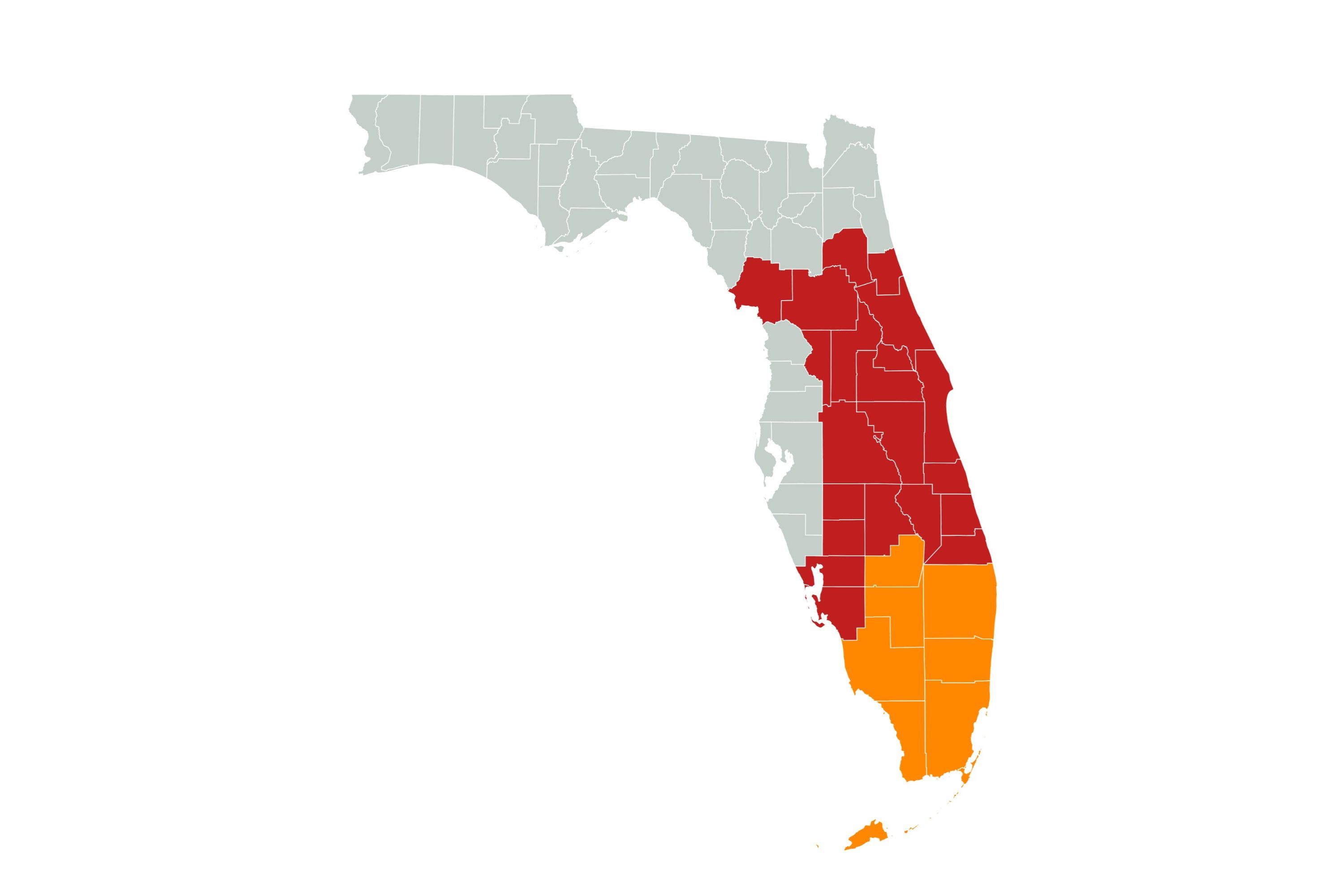
Dozens of counties across Central and South Florida were on alert for fire weather conditions on Thursday, the National Weather Service (NWS) warning that a combination of strong winds and low relative humidity could contribute to extreme fire behavior in the Sunshine State.
Why It Matters
A red flag warning is issued by the NWS to notify local fire officials of potentially hazardous weather conditions expected within the next 12 to 24 hours. Wildfires have hit California and the Carolinas so far this year.
What To Know
As of Thursday morning, red flag warnings had been issued across central and east central Florida. The map below shows where Red flag warnings and fire weather watches were in place in Florida from Thursday morning.
Counties included:
- Brevard
- Charlotte
- DeSoto
- Flagler
- Hardee
- Highlands
- Indian River
- Lake
- Lee
- Levy
- Marion
- Martin
- Okeechobee
- Orange
- Osceola
- Polk
- Putnam
- Seminole
- St. Lucie
- Sumter
- Volusia
Winds near 20 mph were expected, gusting to around 30 mph, along with relative humidity between 25 and 35 percent, according to the NWS.
“Any fires that develop will likely spread rapidly,” it warned.
Meanwhile, there were fire weather watches in place across South Florida.
These included Broward, Collier, Glades, Hendry, Miami-Dade, Monroe, and Palm Beach Counties.
Here, the service said drought conditions combined with low relative humidity values would lead to “increased fire weather concerns.”
Residents in affected areas were urged to avoid any outdoor burning.
The NWS issues fire weather watches up to 72 hours before the conditions are expected to occur, while a red flag warning “is issued when the conditions are expected to occur within the next 24 hours.”
What People Are Saying
The NWS red flag warnings stated: “A Red Flag Warning means that critical fire weather conditions are either occurring now … or will shortly. A combination of strong winds … low relative humidity … and warm temperatures can contribute to extreme fire behavior.”
NWS Jacksonville said on X: “Despite a little rain yesterday, drought conditions will combine with low humidity and gusty winds, creating optimal conditions for rapid wildfire spread across central FL today.”
Meteorologist Brooke Silverang said on X, Wednesday: “All of Florida’s East Coast is under a Fire Weather Watch on Thursday. Fires can spread easily.”
What Happens Next
At the time of writing, the latest red flag warnings were in place until 6 p.m. The NWS said the fire weather watch for South Florida was in effect through Thursday evening.
Florida
Todd Golden explains how Florida beat Alabama and Auburn on the road in same season

Todd Golden’s Florida basketball team has owned the state of Alabama this season. It started out with a Feb. 8 trip to Auburn, a game the Gators won 90-81.
Then, just over a month later, Florida beat Alabama 99-94. On Wednesday, after the win, Golden was asked what his team did to become so successful on the road.
“I think it’s the strength of our team,” Golden said. “We have a very mature team, workmanlike approach. We’re very consistent and for whatever reason, I feel like we really hone in and do a great job of preparing on the road and making sure we come in with a great mentality.”
The Gators beat the Crimson Tide mostly off the strength on the glass. Golden’s squad outrebounded Alabama 50-35, grabbing 16 offensive boards, which it turned into 19 second-chance points.
Florida also won in transition, scoring 22 fast-break points to Alabama’s 10. The Gators fought off several UA comeback attempts to move to 26-4 on the season, 13-4 in SEC play.
“You’re gonna have to deal with some highs and lowes and you can’t allow your emotions to affect you negatively,” Golden said. “And I thought we did a great job doing that. But I think we’re one of the best teams in America, and to do that, you have to go on the road and beat good teams, and we did that with Auburn and we did that again tonight with Alabama.”
The Gators will be the No. 2 seed in the SEC Tournament, which begins next Wednesday in Nashville. Auburn already earned the league’s regular season championship, while Alabama backed into clinching a double-bye on Wednesday, when Missouri lost at Oklahoma.
Florida will close out the regular season against Ole Miss in Gainesville on Saturday. Alabama and Auburn will face off in Neville Arena that same day, tipping off at 1:30 p.m. CT on ESPN.
-

 Sports1 week ago
Sports1 week agoNHL trade board 7.0: The 4 Nations break is over, and things are about to get real
-

 News1 week ago
News1 week agoJustice Dept. Takes Broad View of Trump’s Jan. 6 Pardons
-

 World1 week ago
World1 week agoHamas says deal reached with Israel to release more than 600 Palestinians
-

 Science1 week ago
Science1 week agoKilling 166 million birds hasn’t helped poultry farmers stop H5N1. Is there a better way?
-

 News1 week ago
News1 week agoChristianity’s Decline in U.S. Appears to Have Halted, Major Study Shows
-
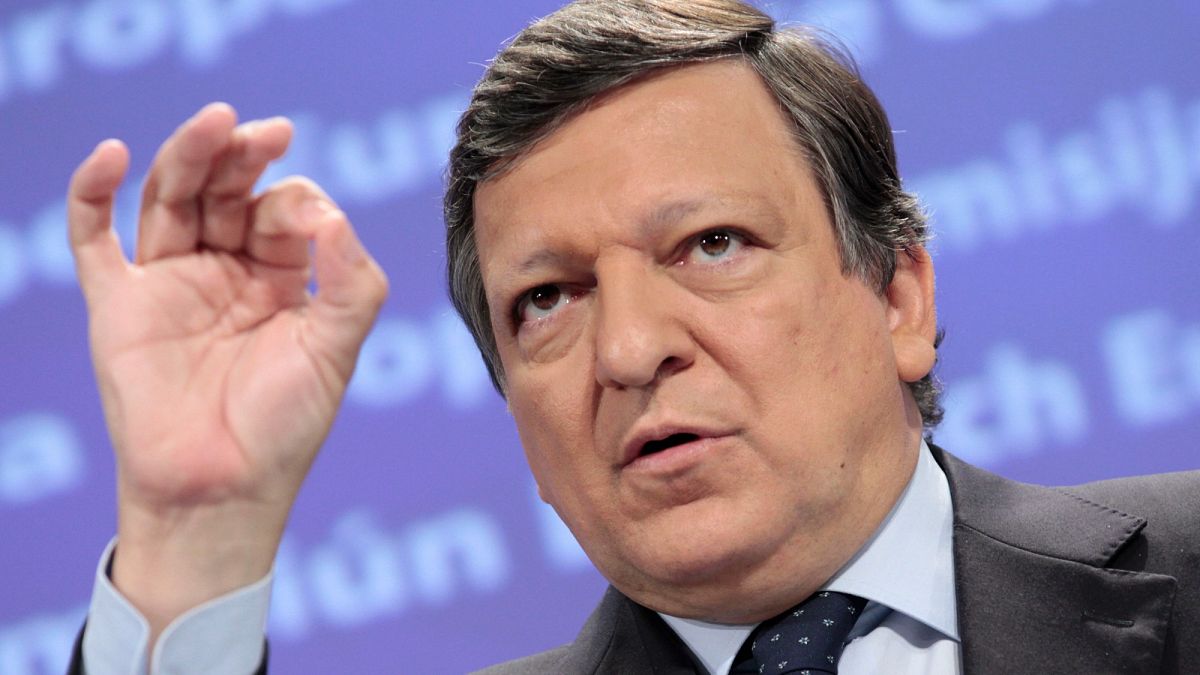
 World1 week ago
World1 week agoGermany's Merz ‘resolute and determined,' former EU chief Barroso says
-

 Technology1 week ago
Technology1 week agoMicrosoft makes Copilot Voice and Think Deeper free with unlimited use
-

 Politics1 week ago
Politics1 week agoSome Republicans Sharply Criticize Trump’s Embrace of Russia at the U.N.
